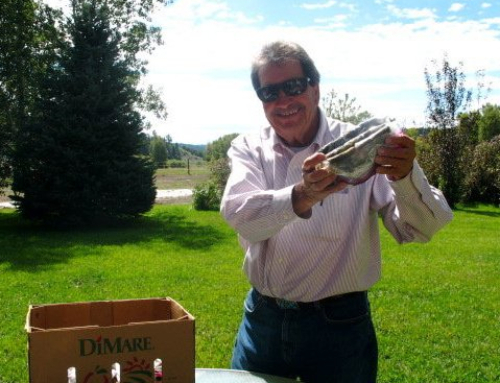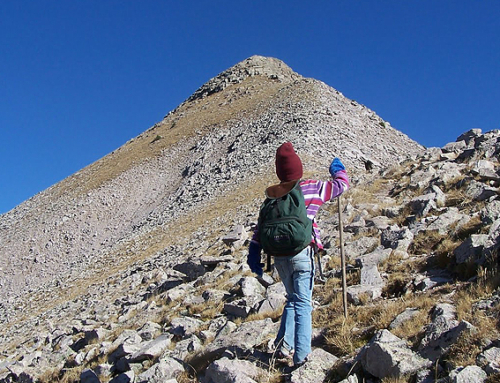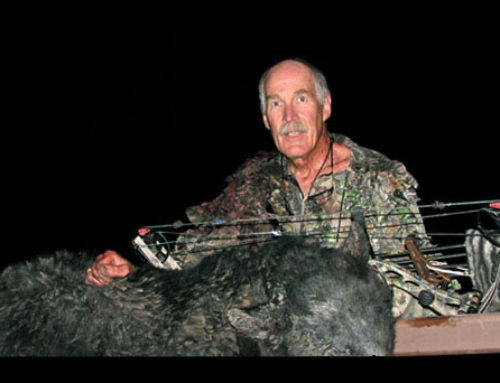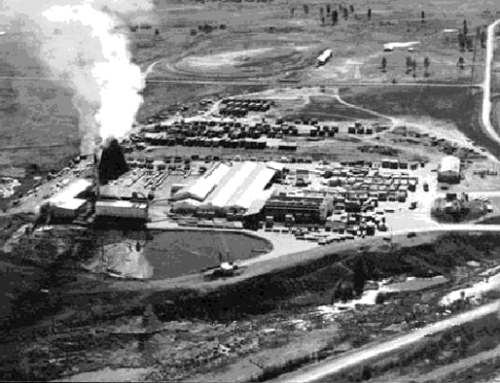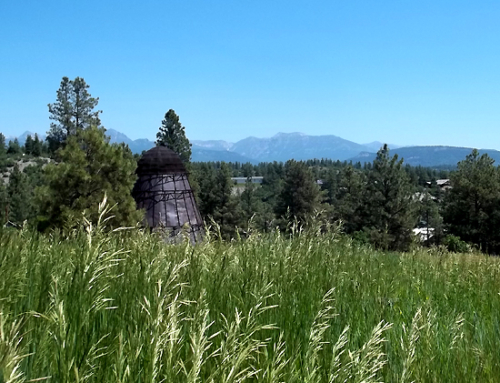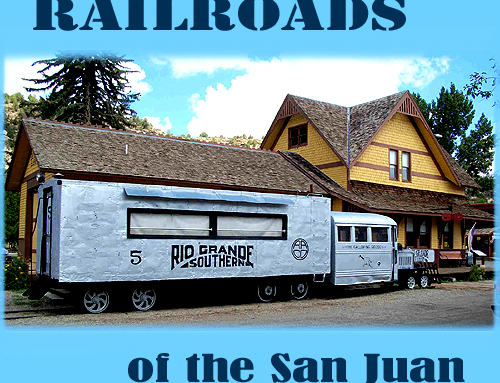Paths, Roads, Trains and Settlement
By Norm Vance
The San Juan Mountain area contains some of the harshest terrain in North America. The high rugged mountains and deep narrow valleys slowed man’s migration across the area. Most of what is now the United States was explored and settled while the San Juan was still empty of mankind save for a nomadic – fair season Indian population and a few random fur trappers. Much of the San Juan’s early history consist of exploration missions that failed due to the harsh terrain and weather conditions. At that time, mid to late 1800s, there was great need for a passage across the area to connect to the people already settled in California. When gold and silver was discovered in the San Juan man began moving into the area in greater numbers. The problem became; how would they service the mining camps and get the riches out of the mountains?
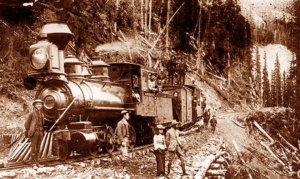
Otto Mears standing in front of his train.
For several years man had harnessed the technology of the steam locomotive to move loads overland. The locomotive was one of mankind’s great inventions. It was only logical for people with imagination to consider using trains for hauling heavy gold and silver ore out of the San Juan.
The San Juan provided a strong challenge even to stream and steel. The ultimate solution was the narrow gauge railroad. The rough terrain meant that a train had to switch back and forth in order to gain elevation up or down mountain slopes. A smaller and short train can turn sharper corners, but in some places there were no places to turn and the cars and engine were turned, one by one, on a revolving platform. Smaller also meant lighter and smaller platforms.
In many areas the train path had to be cut out of solid stone and the narrow gauge train meant less cutting. The narrow gauge train was considered almost a toy by the industry – which had huge locomotives pulling on the flatlands – but, in the San Juan, it was the only answer.
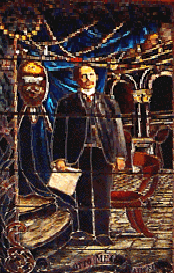
A monument to Mears in the state capitol.
Indeed, a narrow gauge train is dwarfed alongside a big steam locomotive. So, the narrow gauge developed a fairy tail like quality compared to flatland locomotives. Down at lower elevations, with big engines, the trains ran at breakneck speeds while the narrow gauge huffed and puffed up steep mountains in a delightfully beautiful environment. It was considered a great adventure in the late 1880’s to ride trains across the country in order to hook up with and tour on the narrow gauge trains. Several popular books were published in the 1880’s that described the train routes and places to go. These were some of the first tourists in the San Juan.
The Pathfinder of the San Juan
The name of Otto Mears is one well known to researchers of San Juan history. In the state capitol a memorial for him simply reads “Pathfinder of the San Juan.” He would seem to be as unlikely a hero of the old west as could be imagined. He was born in Russia in 1840. His parents died when he was four years old and he was sent, seemingly unwanted, to a series of distant relatives each further from his Russian home. He ultimately found himself in California, barely knowing English, broke and alone. He joined the army and was discharged in New Mexico after his enlistment ended. He worked hard, learned the supply business and opened his own general store along the Conejos River, just east of the Continental Divide.
Otto Mears seemed to be able to see needs and face the challenge to accomplish them. He became a road builder in order to transport goods to the new stores he opened as new towns sprang to life. The roads and tracks to be put into the San Juan became his life’s challenge.
Toll Roads
The first paths beyond widened Indian trails in many areas were toll roads. The roads were always hard and expensive to install across mountain passes. There was no government to collect taxes and build roads, so the toll road was the answer. Most toll roads were only wide paths and became-impassable in poor weather. Still, they were vast improvements over the previous trails as they were wide enough for wagon traffic. Towns often burst upon the countryside before roads were built. It was a grand day of high celebration when the toll road was finally cut into most early towns.
T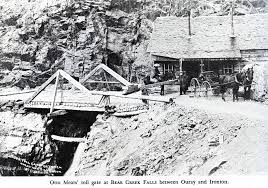 he Narrow Gauge
he Narrow Gauge
With the trains approaching it was obvious to use toll road paths as a base for new tracks. Otto Mears already had several toll roads to his credit, along with interest in mines so, he became a railway builder.
When the Ute Indians were removed to reservations in 1874 the towns of Silverton and Lake City began. Lake City was founded by Otto Mears. Ouray, Telluride and other cities followed in a few years. The Denver & Rio Grande and Otto Mears soon put narrow gauge track to most locations in the San Juan.
The feats accomplished make one wonder why this effort is not included as one of the “wonders of mankind.” The technology to build the roads and tracks was literally invented as the need arose. With work at a standstill in the harsh winter, the warm season’s efforts had to be massive. Even the survey parties plotting paths for the passes were considered high and dangerous adventure.
When the prospect of building a railway through the huge canyon on the Gunnison River arose Otto had workers hang on 600 foot cables setting explosives on the sheer canyon walls. After a ledge had been blown out he lowered burros and wagons to the ledge and work continued on to the sides.
Otto Mears and other early transportation builders in the San Juan opened the wilderness to new populations and higher profits.
A sample of early train riding can be found on two narrow gauge railways functioning on their original track. One train travels from downtown Durango to Silverton. The other crosses CumbresPass between Antonito, Colorado and Chama, New Mexico. Either trip is an experience of a lifetime and should be a part of everyone’s San Juan experience. Many San Juan towns have train displays or museums for the public. For those with an interest in old railroads there is the Colorado Railroad Museum located in Golden, Colorado.

